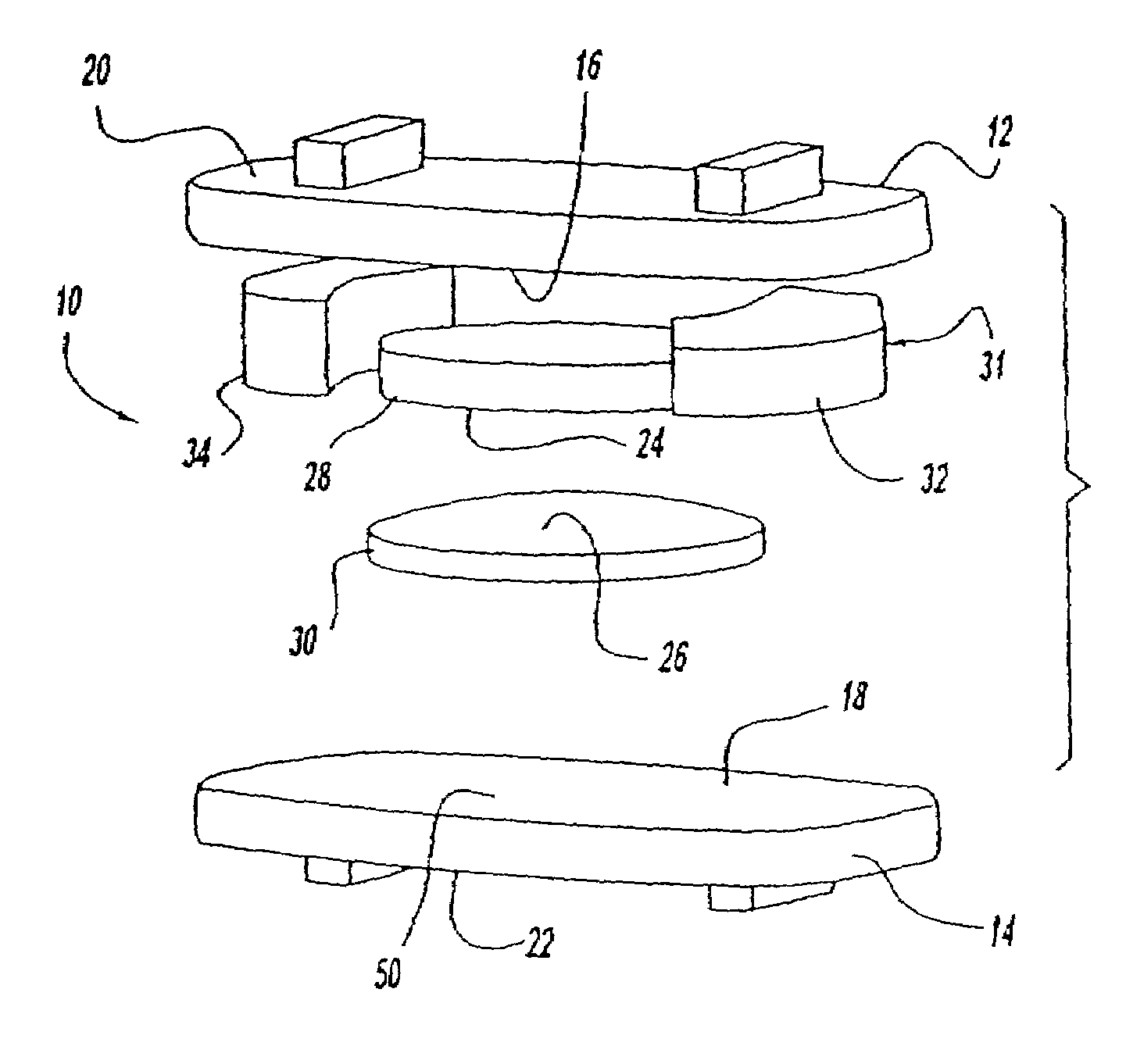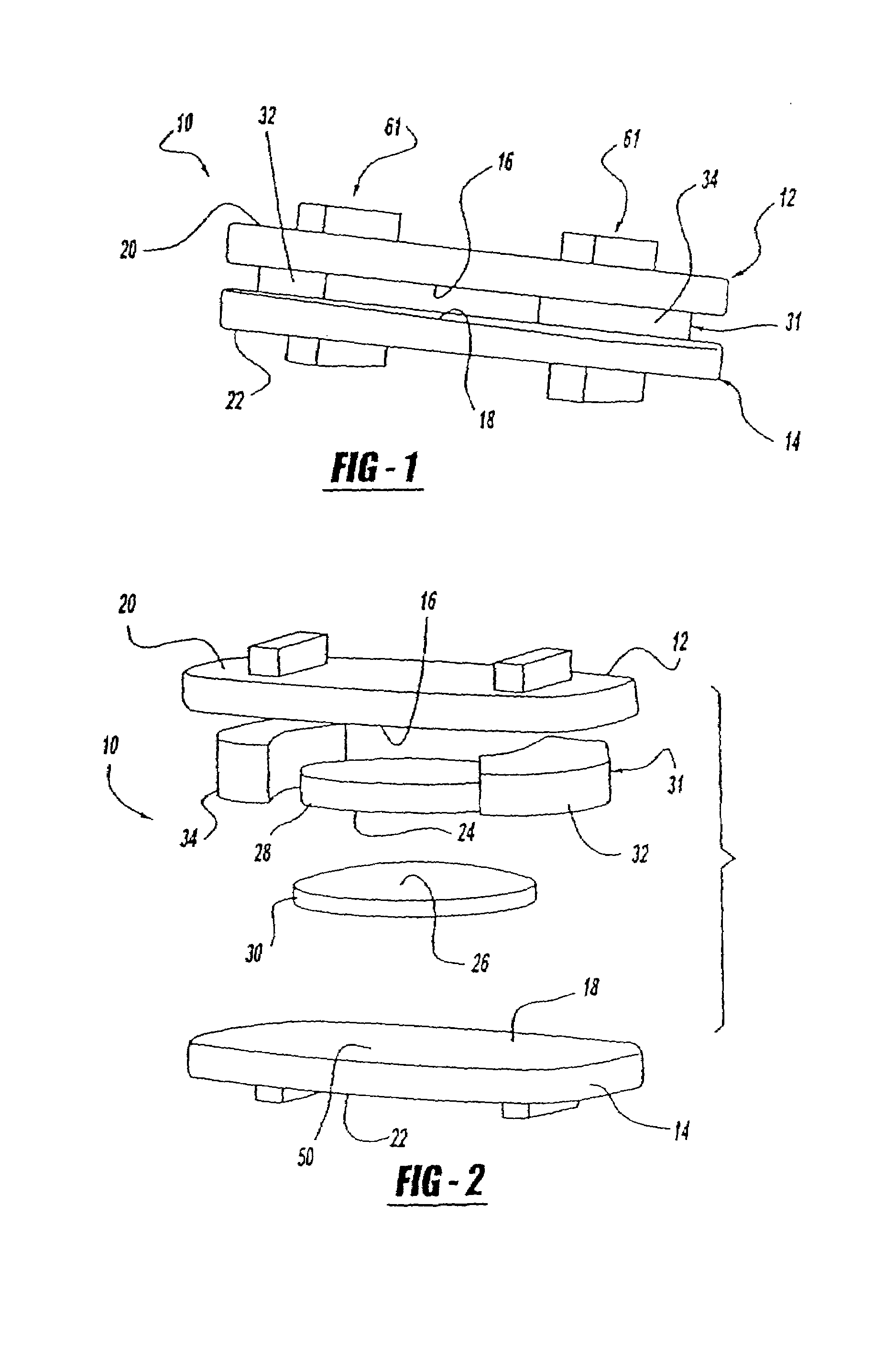Artificial intervertebral disc
a technology of artificial vertebrae and discs, applied in the field of spinal implants, can solve the problems of disc degeneration, disc degeneration, and the complex system of joints being subject to varying loads and problems, and achieve the effects of reducing the risk of disc degeneration, and reducing the strength of the dis
- Summary
- Abstract
- Description
- Claims
- Application Information
AI Technical Summary
Problems solved by technology
Method used
Image
Examples
Embodiment Construction
[0073]An artificial intervertebral disc constructed in accordance with the present invention is generally shown at 10 in the Figures. Similar structures of various embodiments are indicated by primed numerals in the Figures. The invention is an artificial intervertebral disc, sometimes referred to by other terminology in the prior art such as intervertebral spacer device, or spinal disc for replacement of a damaged disc in the spine. The invention restores motion to the damaged natural disc that allows for motion as well as cushioning and dampening. As described below in more detail, the present invention also allows changes to the artificial disc motion intraoperatively to adjust for specific anatomical conditions.
[0074]Referring to the Figures, the disc 10 includes an upper housing member generally shown at 12 and a lower housing member generally shown at 14. The housing members 12, 14 include spaced inner surfaces 16 and 18 facing each other and oppositely facing outer surfaces 2...
PUM
| Property | Measurement | Unit |
|---|---|---|
| perimeter | aaaaa | aaaaa |
| radius | aaaaa | aaaaa |
| radius of curvature | aaaaa | aaaaa |
Abstract
Description
Claims
Application Information
 Login to View More
Login to View More - R&D
- Intellectual Property
- Life Sciences
- Materials
- Tech Scout
- Unparalleled Data Quality
- Higher Quality Content
- 60% Fewer Hallucinations
Browse by: Latest US Patents, China's latest patents, Technical Efficacy Thesaurus, Application Domain, Technology Topic, Popular Technical Reports.
© 2025 PatSnap. All rights reserved.Legal|Privacy policy|Modern Slavery Act Transparency Statement|Sitemap|About US| Contact US: help@patsnap.com



